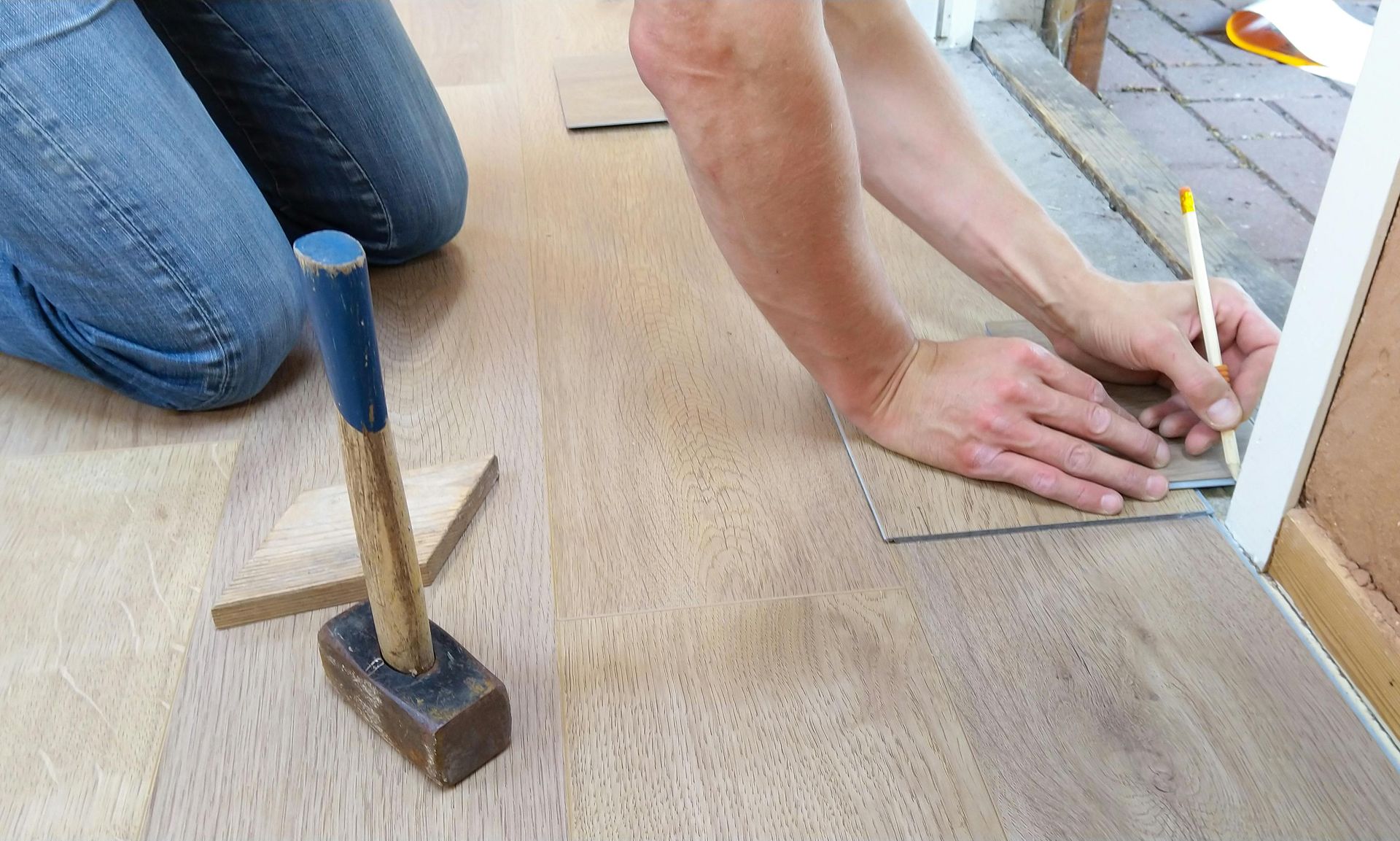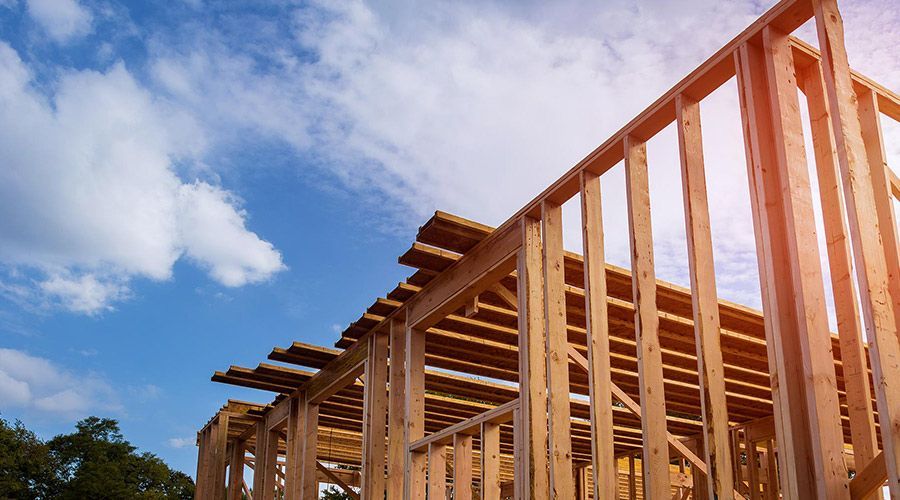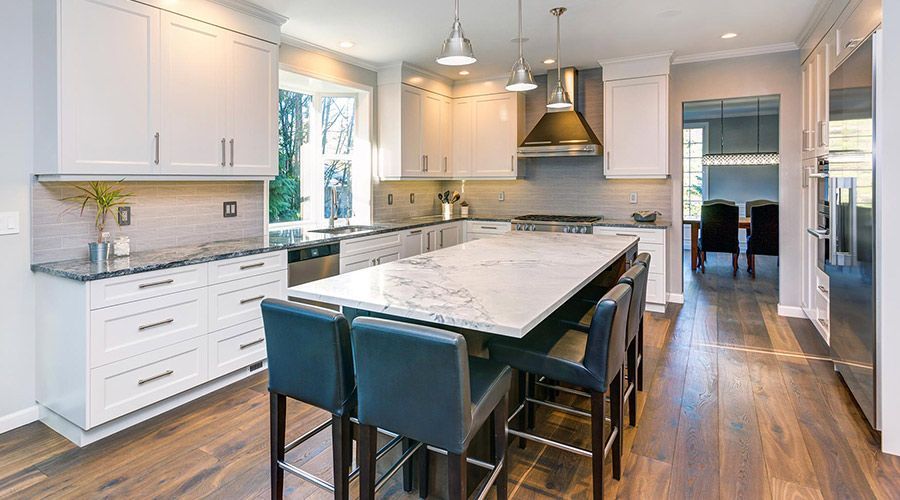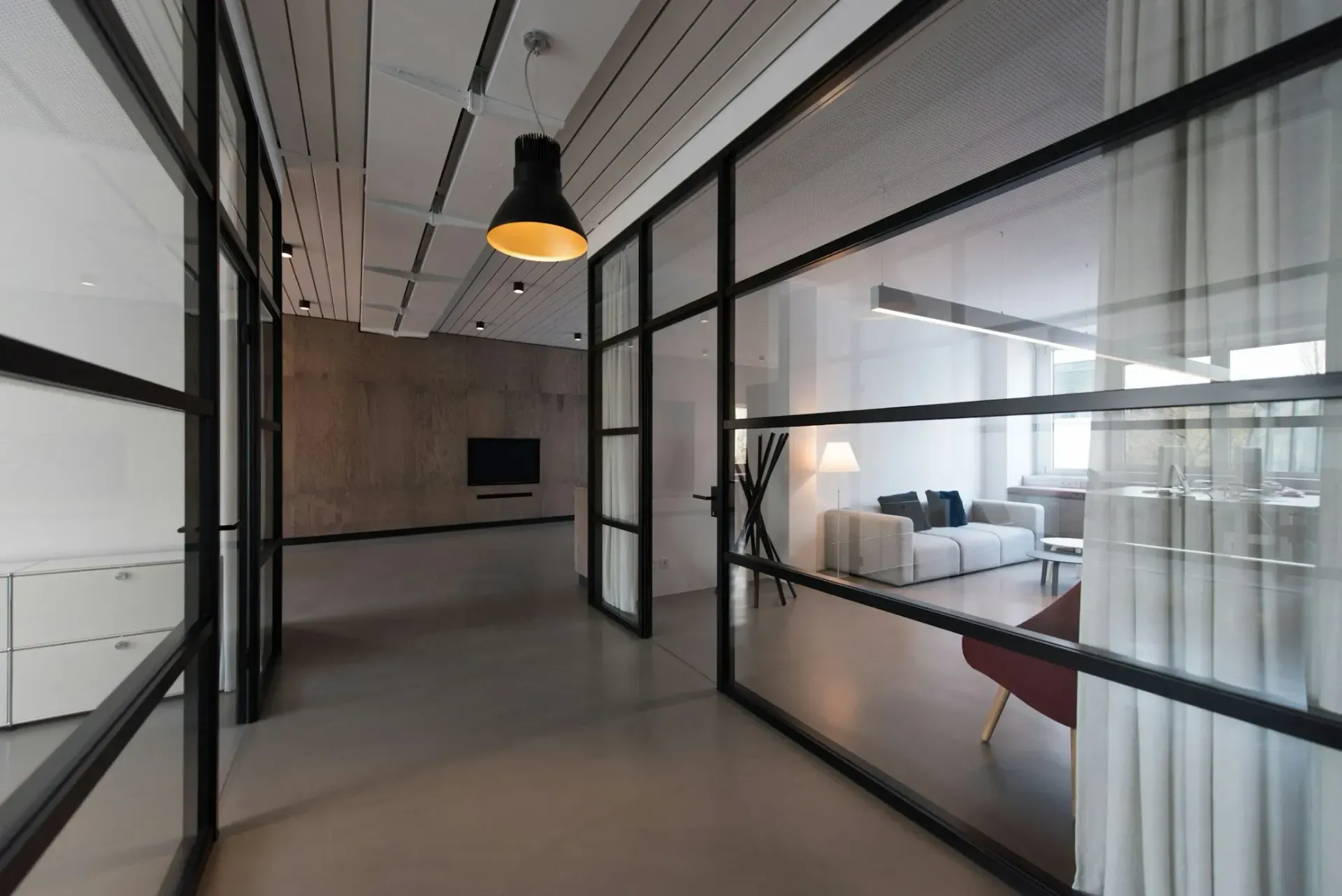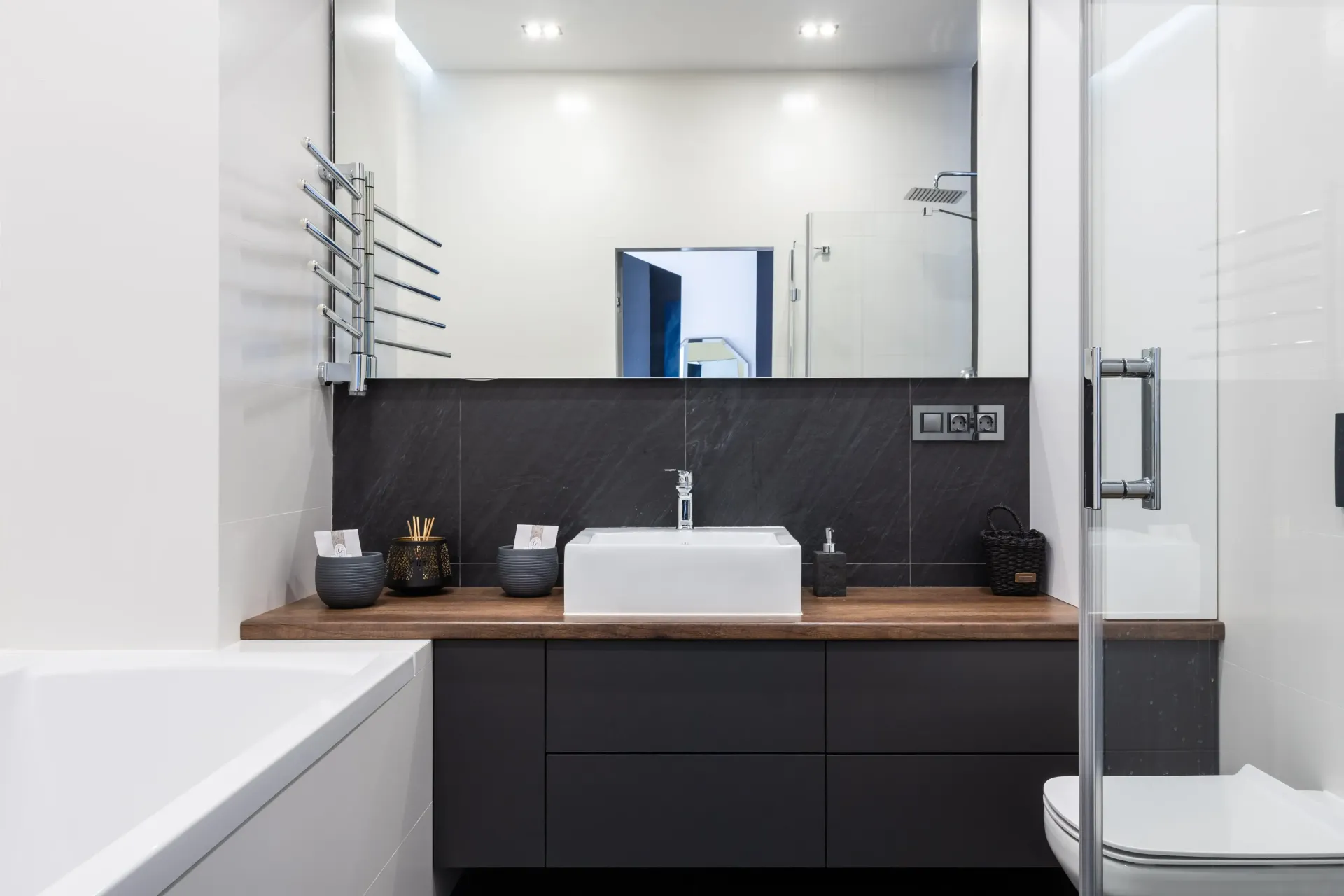
Saving Money on a Remodel? Expert Tips and Strategies
Remodeling your home can be exciting, but it’s easy for costs to get out of hand. Without a solid plan, you might spend more than you intended and feel overwhelmed.
The good news? You can cut costs without cutting corners. With a little strategy and smart decisions, you’ll stay on budget and still achieve the renovation you’ve been dreaming about.
This guide will show you how to plan, prioritize, and make the right choices to save money on your remodel.
Plan Thoroughly Before Starting
Taking the time to plan your remodel will save you money and reduce surprises down the road. A solid plan keeps you on track and helps you avoid unnecessary expenses.
Set a Realistic Budget
Start by creating a detailed budget. List every expense you can think of, from materials and labor to permits and unexpected costs. Don’t forget to include a contingency fund—aim for 10–20% of your budget—to handle surprises like hidden water damage or structural issues.
Prioritize Needs Over Wants
Decide what’s essential and what’s nice to have. Do you need new cabinets, or can you refinish the ones you already have? Focus on updates that will improve your home’s functionality and value first. Save the extras for later when you have more wiggle room in your budget.
Obtain Multiple Quotes
Get quotes from at least three contractors. Don’t automatically choose the cheapest one—look for a balance of price, experience, and reviews. Comparing quotes helps you understand the market rate and ensures you’re getting the best value for your money.
DIY Where Possible
Doing some of the work yourself can save you a significant amount of money. Not every task requires a professional, and tackling smaller projects on your own can help stretch your budget.
Assess Your Skills
Before picking up a hammer, be honest about your abilities. Tasks like painting, minor demolition, or installing light fixtures are often manageable for homeowners with basic skills. If you’re not confident, start small and practice on less visible areas.
Know When to Hire a Pro
Some tasks should always be left to professionals, especially those involving plumbing, electrical work, or structural changes. Attempting these on your own can lead to safety risks or expensive mistakes. It’s better to pay for expertise upfront than to fix costly errors later.
Safety and Permits
If you plan to handle any part of the remodel, ensure you follow safety guidelines. Research whether you need permits for specific projects, even if you’re doing the work yourself. Skipping permits can lead to fines or issues when selling your home.
Reuse and Repurpose Materials
One of the easiest ways to save money during a remodel is to make the most of what you already have. Reusing materials and repurposing fixtures not only cuts costs but also adds a unique touch to your home.
Salvage Existing Fixtures
Before replacing everything, look at what can be saved. Can you repaint your cabinets instead of replacing them? What about refinishing your hardwood floors instead of installing new ones? Small updates like these can make old features feel brand new without the hefty price tag.
Source Second-Hand Materials
Shop smart by checking out salvage yards, Habitat for Humanity ReStores, or online marketplaces like Craigslist and Facebook Marketplace. These places often have quality materials like tiles, sinks, or lighting at a fraction of retail prices. You can even find unique items that add character to your home.
Sell What You Don’t Use
If you’re removing old fixtures or appliances, sell them instead of throwing them out. Websites like eBay, OfferUp, or local community groups are great for finding buyers. The money you earn can go directly toward your remodeling budget.
Rent Tools Instead of Buying
Instead of purchasing expensive tools for a one-time project, consider renting them from local hardware stores or rental companies. This is especially useful for larger tools like tile saws, sanders, or nail guns that you may not use again.
Donate for a Tax Deduction
If you’re replacing fixtures or materials that are still in good condition, donate them to charities like Habitat for Humanity. Many organizations provide tax-deductible receipts for donations, which could help you save on taxes while giving back to the community.
Choose Cost-Effective Materials
You don’t have to break the bank to achieve a stylish and durable remodel. Choosing affordable alternatives and knowing where to invest can make all the difference in keeping costs under control.
Affordable Alternatives
Consider using materials that mimic high-end finishes. For example:
- Laminate countertops instead of natural stone like granite or marble.
- Luxury vinyl flooring as a substitute for hardwood or tile.
- Prefabricated cabinets instead of custom-built ones.
- Quartz countertops instead of granite for a durable, affordable option that mimics the look of stone.
- Ceramic or porcelain tiles instead of natural stone tiles to achieve the same elegant effect at a lower cost.
These options often deliver a similar look at a fraction of the cost.
Balance Quality and Cost
While saving money is important, don’t sacrifice durability for the sake of a low price. Spending a little more upfront on items like flooring or countertops can save you from costly repairs or replacements later. Look for materials that offer the best mix of affordability and longevity.
Shop Sales and Clearance Sections
Check out clearance sections at home improvement stores for discounted materials, including tiles, lighting, and fixtures. End-of-season sales are also a great opportunity to snag deals on high-quality items.
Consider Alternative Suppliers
Look beyond big-box stores. Local suppliers, online retailers, and specialty warehouses often offer lower prices on materials. Be sure to compare prices and check for customer reviews to ensure quality.
Buy in Bulk
If your remodel involves large quantities of materials like tiles, paint, or wood, buying in bulk can save you money. Many suppliers offer discounts for larger orders, especially if you plan ahead and purchase everything at once.
Schedule Renovations Wisely
Timing plays a big role in how much you spend on your remodel. A little flexibility with your schedule can lead to big savings.
Off-Season Remodeling
Contractors and suppliers tend to be busier during peak seasons, like spring and summer. Scheduling your remodel during the off-season—fall or winter—can help you save money. Many contractors offer discounts to fill their calendars during slower months.
Avoid Holiday Rush
Steer clear of the holiday season when many homeowners rush to complete projects. This increased demand often drives up prices and reduces contractor availability. If you can plan around this, you’ll have more room to negotiate pricing.
Time-Sensitive Purchases
Plan your purchases around sales and discounts. For instance:
- Appliances often go on sale during Black Friday or end-of-year clearances.
- Outdoor materials like patio furniture and grills are typically discounted in late summer.
Being patient and waiting for the right deals can lead to significant savings.
Prevent Delays
Unexpected delays can quickly add to your remodeling costs. Communicate clearly with your contractor, make decisions promptly, and ensure that materials are ordered on time. A smooth schedule minimizes wasted time and unnecessary expenses.
Energy Efficiency Upgrades
Incorporating energy-efficient features during your remodel not only saves you money on utility bills but can also qualify you for incentives like tax credits or rebates. These upgrades often pay for themselves over time.
Long-Term Savings
Invest in upgrades that reduce energy consumption, such as:
- LED lighting: These bulbs use up to 90% less energy and last significantly longer than traditional bulbs.
- Smart thermostats: Devices like Nest or Ecobee help you control heating and cooling efficiently, cutting energy costs.
- High-efficiency windows: Double-pane or low-E windows keep your home insulated and reduce heating and cooling expenses.
These changes may cost more upfront but will reduce your energy bills for years to come.
Available Incentives
Take advantage of programs that reward energy-efficient upgrades. Many states and utility companies offer rebates for installing energy-saving appliances, solar panels, or insulation. Check resources like the Energy Star website for local programs and tax credit details.
Seal and Insulate
Proper insulation and sealing gaps around doors, windows, and walls can dramatically improve your home’s energy efficiency. Products like weatherstripping and spray foam are inexpensive and easy to install, making them an excellent way to save both energy and money.
Opt for Renewable Energy
If your budget allows, consider adding renewable energy options like solar panels. Although the upfront cost is higher, tax credits and long-term energy savings make this a worthwhile investment for many homeowners.
Financing Options
Financing your remodel wisely can help you stay on budget and avoid unnecessary financial stress. Exploring different funding options ensures you choose one that aligns with your financial situation and goals.
Home Equity Loans
A home equity loan or line of credit (HELOC) lets you borrow against the equity in your home. These options often come with lower interest rates than personal loans or credit cards. Use this option if you’re confident in your ability to make consistent payments.
Personal Savings
Using personal savings is one of the most cost-effective ways to fund your remodel. It eliminates interest payments and keeps you debt-free. If you don’t have enough saved, consider delaying your project to build up your savings.
Explore Government Programs
Some local governments offer low-interest loans or grants for home improvement projects, especially if you’re making energy-efficient upgrades or repairing an older home. Check with your city or state housing office for available programs.
Credit Cards with Rewards
For smaller remodeling projects, using a credit card with cashback or reward points can be a smart option. However, avoid using credit cards for large expenses unless you can pay off the balance quickly to avoid high-interest rates.
Renovation Loans
Look into specialized renovation loans like the FHA 203(k) or Fannie Mae HomeStyle loans. These programs are designed for home improvement projects and may offer better terms than traditional loans.
Conclusion
Remodeling doesn’t have to drain your wallet. With thoughtful planning, smart decisions, and a focus on what truly matters, you can achieve a stunning transformation without overspending. Remember to prioritize needs, explore affordable materials, and tackle projects you can handle yourself. Don’t forget to shop smart, schedule wisely, and invest in energy-efficient upgrades to maximize long-term savings.
By following these tips, you’ll not only save money but also create a space you’ll love for years to come. Remodeling is a big step—make it a rewarding one.
Ready to start your remodel? Trust Bluroc, the experts in creating beautiful, functional spaces in Pleasant Grove, Park City, Deer Valley, Alpine, and Salt Lake City. Whether you’re planning a home remodel, building a new home, or upgrading with a kitchen or bathroom remodel, Bluroc delivers exceptional craftsmanship and attention to detail.
Need help with commercial projects? Bluroc specializes in new commercial construction, turnkey solutions, and commercial remodeling, including kitchen and bathroom upgrades for businesses.
Contact Bluroc today and bring your vision to life!
FAQs
What are some unexpected costs to plan for during a remodel?
Hidden issues like outdated wiring, plumbing problems, or structural damage often surface during a remodel. Permit fees and changes in material prices are also common surprises. Including a contingency fund in your budget can help cover these unexpected expenses.
How can I find a trustworthy contractor for my remodel?
Look for contractors with solid reviews, proper licensing, and insurance. Ask for references and check previous work. Getting multiple quotes and having detailed contracts will also help you feel confident in your choice.
What financing option is best for remodeling?
The best financing option depends on your situation. Home equity loans or HELOCs are good for larger projects due to their lower interest rates, while personal savings or credit cards may work for smaller expenses. Specialized renovation loans like FHA 203(k) are great if you're planning significant upgrades.
How can I save money on a kitchen remodel?
Refinishing cabinets, upgrading hardware, and adding a fresh coat of paint are cost-effective ways to refresh your kitchen. Consider laminate or quartz countertops instead of granite, and shop sales for appliances and fixtures.
What’s the best time of year to remodel?
Fall and winter are typically off-peak seasons for contractors, which can help you negotiate better rates and save money. Avoid the holiday season rush, as demand often drives up costs.


